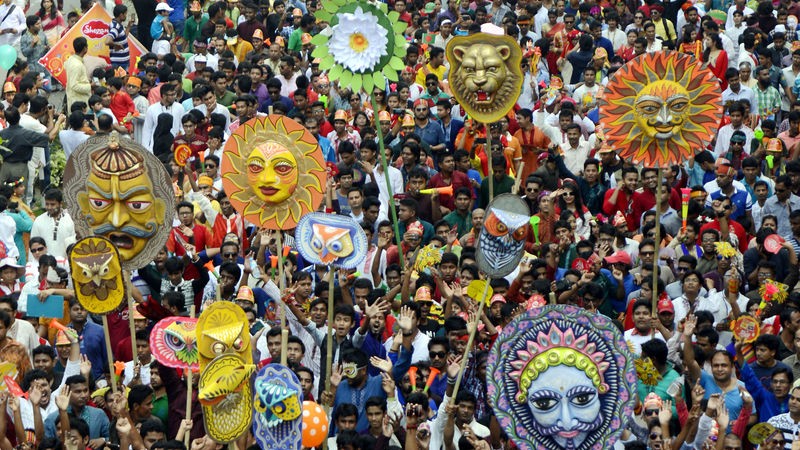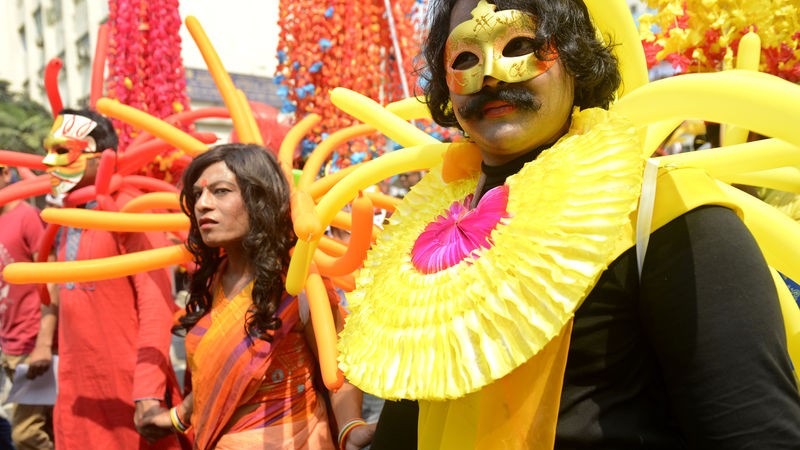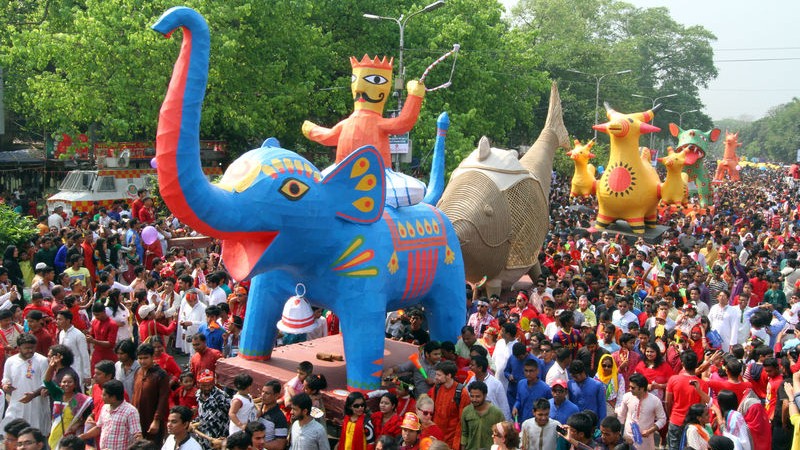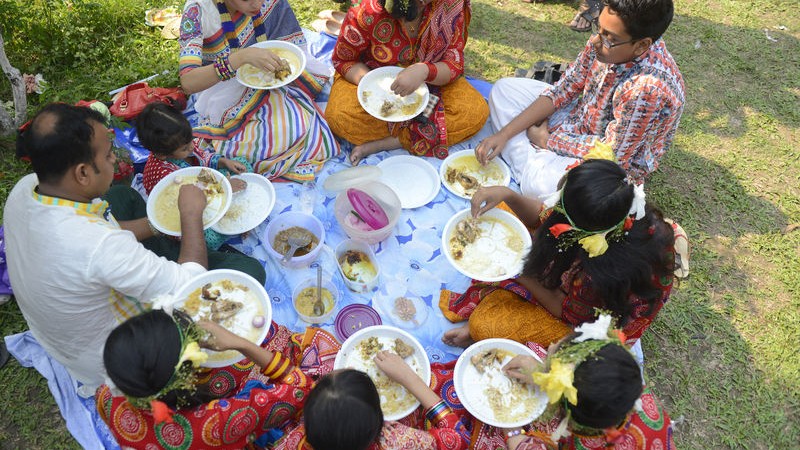 |
| People celebrating Pahela Baishakh at Mangal Shobhajatra (Rally), a procession organised by Dhaka University’s Faculty of Fine Arts to welcome the Bengali new year. Image by Sourav Lasker. Copyright Demotix (14/4/2015) |
The past few months have been particularly tough for Bangladesh as continuous
political turmoil and violence left over 120 people dead. The recent killings of
two free-thinking blog activists and the emergence of a new militant wing that seeks to murder atheists have worried many.
Whenever the country has found itself in trouble, Bangladeshis have embraced their roots, taking solace in art and culture to unite against any challenges they face.
On Tuesday, April 14, 2015, people did just that in Bangladesh, welcoming the
Bengali New Year 1422 with
the resolve to continue the fight against communalism and religious fanaticism.
Bengalis, who are overwhelmingly the largest (98%) ethnic group in Bangladesh, customarily celebrate the New Year (
Pohela Baishakh) with colourful procession and festivities. This year's festivities had a special theme: "
Onek Alo Jaalte Hobe Moner Ondhokare" (Burn many lights in the darkness of hearts). It
was chosen to commemorate the recent assassination of blogger and writer Avijit Roy and online activist Oyasiqur Rahman. A 20-foot-tall statue symbolising the rise of communal forces was at the procession, reminding everyone to reject such strife.
 |
| People carried colourful costumes in the Mangal Shobhajatra (Rally). Image by Sourav Lasker. Copyright Demotix (14/4/2015) |
Pohela Boishakh is the first day of the Bengali calendar, celebrated on 14 April in Bangladesh and 15 April in the Indian state of West Bengal by Bengalis. Hundreds of fairs and events welcoming the New Year takes place in many parts of Bangladesh and in West Bengal in India. The largest festivities happens in Dhaka, the capital of Bangladesh, where tens of thousands of people wearing multicoloured masks and traditional dress march in the Mangal Shobhajatra procession marking the New Year.
Tanvir Haider Chaudhury wrote on Facebook:
আপনি যেখানে থাকুন, পারলে ঢাকা চলে আসুন। পৃথিবীর সবচেয়ে আনন্দময়, উৎসবমুখর জায়গা এই মুহূর্তে ঢাকা।
শুভ নববর্ষ।
Wherever you are, please come to Dhaka if you can. Right now Dhaka is the happiest place on earth full of festivities. Shuvo Noboborsho (Happy new year).
While Twitter user Bappy tweeted a photo:
 |
| Crowds celebrated Pahela Baishakh at Mangal Shobhajatra, a procession organised by Dhaka University’s Faculty of Fine Arts to welcome the Bengali New Year 1422. Image by Sk. Hasan Ali. Copyright Demotix (14/4/2015) |
Anila Haque thanked Google for creating a doodle for the occasion:
Gargie Ahmad hoped that the New Year would bring an opportunity to start anew:
 |
| To the Bengalis, hilsa isn't just a fish. It's an integral part of the culture and heritage. Be it fried or cooked with mustard, hilsa is a must in Pahela Baishakh celebrations. Image by Sourav Lasker. Copyright Demotix (14/4/2015) |
Indian Prime Minister Narendra Modi tweeted in Bengali:
My good wishes to all the Bengali friends on Pahela Boishakh. Hope the following year will be great for everyone. Shuvo Noboborsho (Happy New Year).
 |
| 'Nokhsikatha' graffiti by the Students of Fine Arts Institute on the walls of Dhaka University Fine Arts Institute where the rally begins. Image by Firoz Ahmed. Copyright Demotix (14/4/2015) |
And other netizens tweeted out images of the holiday:
 |
| 'Nokhsikatha' graffiti by the Students of Fine Arts Institute on the walls of Dhaka University Fine Arts Institute where the rally begins. Image by Firoz Ahmed. Copyright Demotix (14/4/2015) |
The post was also published in
Global Voices Online.






























0 comments:
Post a Comment